Research Article 
 Creative Commons, CC-BY
Creative Commons, CC-BY
Drug Poisoning Admission Among Children, A One Year Review of Medical Records Hospital in Benghazi-Libya
*Corresponding author: Samir Elmrghni, Department of Forensic Medicine and Toxicology, Faculty of Medicine, University of Benghazi
Received: March 11, 2022; Published: March 16, 2022
DOI: 10.34297/AJBSR.2022.15.002158
Abstract
Introduction: Poisoning in pediatric patients is a common and preventable cause of morbidity and mortality. Aim: study acute drug poisoning by drug ingestion cases in Benghazi children hospital during 2020 year to know the number of cases to measure the magnitude of problem.
Method: A retrospective study of medical record of poisoning admission by drug ingestion during 2020 was conducted at Benghazi Children Hospital in Libya.
Result: there was 127 cases of drug ingestion poisoning have been collected.
Conclusion: The children poisoning is a pediatric care problem around the world, in both developing and developed countries that needs to be taken care of and to be considered as a priority, Accidental poisoning exposures from drugs remain a significant problem for those younger than 6 years of age. Further education of parents and care takers and the employment of child-resistant containers are major concern and deserves more attention.
Keywords: Poisoning, Drugs, Pediatrics, Benghazi
Introduction
Young children are particularly vulnerable to accidental poisoning in the home, as are elderly people, often from confusion. Hospitalized people and industrial workers are also vulnerable to accidental poisoning by drugs errors and from exposure to toxic chemicals, respectively [1]. The damage caused by poisoning depends on the poison, the amount taken and the age and underlying health of the person who takes it. Some poisons are not very potent and cause problems only with prolonged exposure or repeated ingestion of large amounts. Other poisons are so potent that just a drop on the skin can cause severe damage [2]. Acute poisoning is exposure to a poison on one occasion or during a short period of time. Symptoms develop in close relation to the degree of exposure. Absorption of a poison is necessary for systemic poisoning (that is, in the blood throughout the body). In contrast, substances that destroy tissue but do not absorb, such as lye, are classified as corrosives rather than poisons. Furthermore, many common household medications are not labeled with skull and crossbones, although they can cause severe illness or even death. In the medical sense, toxicity and poisoning can be caused by less dangerous substances than those legally classified as a poison. Toxicology is the study and practice of the symptoms, mechanisms, diagnosis, and treatment of poisoning.
Acute Poisoning in children is still a major public health problem and a frequent cause of admission in emergency department and it accounts for 1% of hospital admissions annually. [3] Accidental ingestion is one of the most important causes of poisoning in children and is most prevalent between 1-5-year-olds. [4] In this age boys are more involved. [5,6] Suicide attempts are the other cause of poisoning in children that occur in adolescents and is seen more in females. [4-7].
Aim of the project
Accidental poisoning exposures from drugs remain a significant problem for those younger than 6 years of age.
Aim of the project to study acute drug poisoning by drug ingestion cases in Benghazi children hospital during 2020 year to know the number of cases to measure the magnitude of problem, Age to determine the most frequent age groups vulnerable to poisoning, Gender to find out if there is any discrepancy in the numbers of cases between the two genders, Type of admission to know the most frequent ways that a child is exposed to poisoning agents, severity of symptoms of each case that enter to the hospital. All these details and data is needed to find out the right solution for this pediatric health problem and to know the major risk factors.
Methods
A retrospective study of medical record of poisoning admission by drug ingestion during 2020 was conducted at Benghazi Children Hospital in Libya. All the data was observed from statistic department and all the data were well-organized in the Benghazi Children Hospital system, but some information was missing to finish the study. The missing information observed manually from the Benghazi Children Hospital archive there was 127 cases of drug ingestion poisoning have been collected and filled into a form to complete the study. Variables such as age, gender, cause of toxicity, season of admission and severity of cases, type of discharge, were studied.
Statistical data program of Microsoft Excel and IBM SPSS Statistics was used.
Results
During the 2020 year there were 127 admissions by drug ingestion and their data have been collected and grouped.
Gender: 65 of patients were males and 62 of them were females as shown in the (Table 1).
Age: the ages of the patients ranged from less than one-year to fifteen-year and the data grouped to five intervals as shown in the (Table 2).
Type of the drug: there was a wide variety of drugs that were summarized into groups as shown in the (Table 3).
Type of admission: most of the cases poisoned by accident with 110 cases (86.6%) followed by 14 cases intentionally poisoned and 3 cases with unknown cause of poisoning as shown in (Figure 1).
Season of admission: most of cases were recorded in summer 46 cases (36.22%), followed by spring with 31 cases (24.4%) as shown in the (Table 4).
Duration: most of cases duration of stay ranged from one day to two days and the longest duration was for six days as shown in (Table 5).
Severity of the symptoms: most cases were diagnosed with mild symptoms 64 (50.4%) followed by cases with no symptoms 45 (35.4%) and 18 (14.2%) cases showed sever symptoms as shown in the (Table 6).
Department: most of the cases were entered to the common ward with 105 cases (83.5%), and 21 cases (16.5%) entered to the ICU as shown in the (Table 7).
Discharge: most of the cases 107 (84%) cases were normally discharged followed by 8 (6%) cases were discharged to a Psychiatric, followed by 7 cases were escaped and the rest of the cases were discharged to social specialist and neurologist as shown in (Table 8).
Address of patients: most of the cases are from Benghazi city 121 cases and 6 cases are from outside the city (Table 9).
Discussion
As shown in (Figure 2), 51.18% of the cases were male, and 48.82% were female, compared to another study conducted in the same hospital in 2014, in which 55.74% of the cases were male, and 44.26% were female. The highest percentage of drug admission was among children from 1-3 years of age mostly due to accidental admission, this finding is consistent with several previous studies conducted in Benghazi 2014(91) and other countries In Sri Lanka 2000(92), and India 2008(93). The percentage decreases in older age groups which indicates children’s lack of awareness, whereas most of the cases over 10 years old tend to be intentional, some of which are reported as suicidal due to household or social stress, others are a result of drug abuse (Figure 3).
As shown in (Figure 4) the highest percentage of poisoning was during the summer 36.22% followed by spring 24.41%, then winter 23.62% and autumn 15.75%. the result is like the previous study in the same hospital in2014(91)
Out of 52 known substances, cannabis was the most frequent drug with 13 cases (10.24%), 11 of them were taken by children less than 7 years old, cannabis widely distributed and easily accessible in Benghazi, followed by aspirin with 10 (7.87%) cases, 8 children ingested more than one drug, 23 cases reported as unknown. (Figure 5) illustrates the percentage of the most recurrent drugs taken by the patients. Most patients (83.5%) were admitted in common ward whereas 16.5% of children admitted to intensive care unit, the result is close to the previous study in Benghazi 2014(91) although the percentage of patients admitted to ICU is higher (Figure 6). In terms of severity 35.4% of the children had no symptoms, while 50.4% had mild symptoms, only 14.2% of the patients had severe symptoms and admitted to the ICU (Figure 7). As illustrated in (Figure 8) most patients 95.3% came from Benghazi, only 4.7% of the patients came from the rural area, 41.7% of the patients were hospitalized after 24 hours, while 40.9% were discharged for 48 hours, only 17.3% of the patients hospitalized for more than 2 days and the maximum duration of hospitalization was 6 days. No mortality from drug poisoning was recorded throughout the time of the study, like the reported study from the same hospital in 2014(91) (Figure 9).
Conclusion
Most of the poisoning cases were accidental and the highest rate of ages ranged from 1 to 3 years and the most cause of poisoning is due drug ingestion; these variables indicate that there is an improper storge of medications that seems to be consider the first risk factor of child poisoning. The ratio of male to female is not significant. Most cases had mild symptoms and hospitalized in the common ward, few cased hospitalized in the intensive care unit and there was no mortality reported, which indicates instantaneous response from the parents and good inspection and treatment for the presenting symptoms. The hospitalization period in most cases remained for no more than two days. As mentioned, most of the cases were poisoned by prescription drug ingestion, especially analgesic drugs which considered reasonable result because of the ease of possession and there is no need for prescription. The children poisoning is considered to be a pediatric care problem around the world, in both developing and developed countries that needs to be taken care of and to be considered as a priority, parents should be more aware and educated in dealing with medication regarding proper storage and disposal, parents should be advised against ingesting medicine in front of children and to pay attention to their mental and emotional issues.
References
- Tanuj Kanchan, Ritesh G Mnezes (2008) Suicidal poisoning in southern India: gender differences. J forensic legal Medicine 15(1): 7-14.
- Sumbria Turlock, Sharma Amit, Prabhakar Shina, Kosey Sourabh, Devgan Shalini (2015) Introduction to Poisoning; A Systematic Review. IJPTP 6(4): 2615-2619.
- Lamireau T, Lianas B, Kennedy A, Fayon M, Penouil F, et al. (2002) Epidemiology of poisoning in children, a 7-year Survey in a pediatric emergency care unit. Eur J Emerg Med 9(1): 9-14.
- Mercanti KJ, Poisoning, In: Kliegmen, RM, Marcdante KJ, Jenson HB (2006) Nelson Essentials of Pediatrics. 5th (edn). Elsevier Saunders 204-212.
- France G, B Bailey, S L Bratton (2021) Hospitalizations for Pediatrics Intoxication in Washington State, 1987-1997. Arch Pediatric Adolesc Med 155(10): 1105-1110.
- Dawson KP, Harron D, Grath L, AmirlaK I, Yassin A (1997) Accidental poisoning of children in the United Arab Emirates. LCAE J Med 3(1): 38-42.
- Hoffman RJ, Osterhoudt KC (2002) Evaluation and Management of Pediatric Poisoning. Pediatrics 51-63.


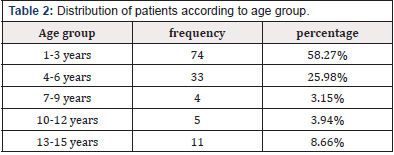

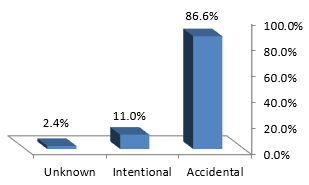

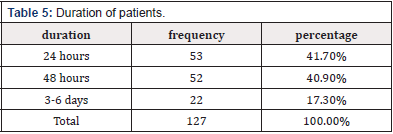




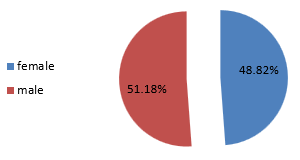

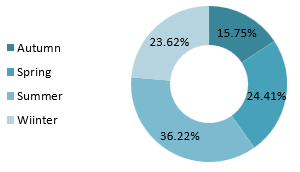


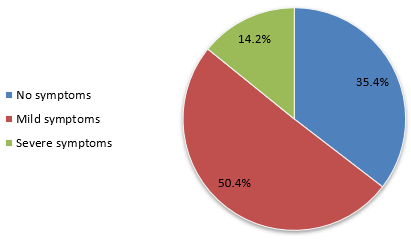
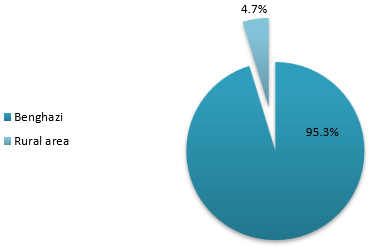



 We use cookies to ensure you get the best experience on our website.
We use cookies to ensure you get the best experience on our website.